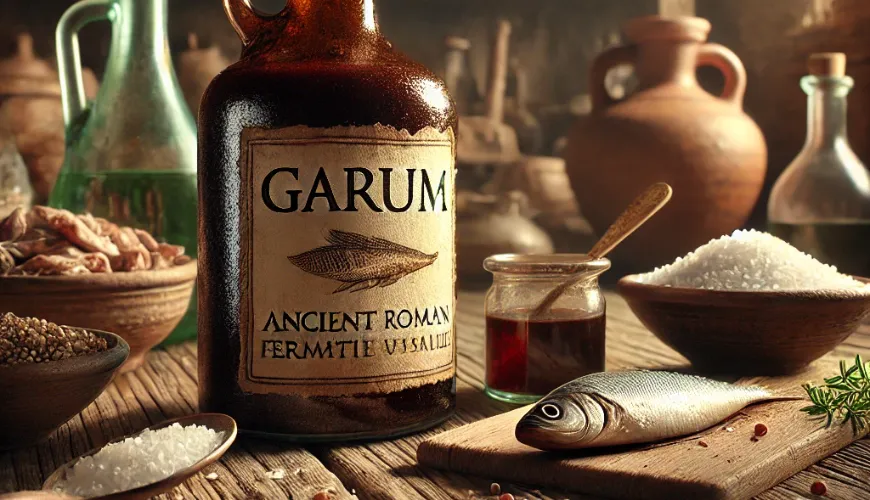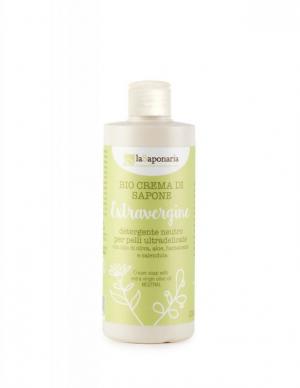
Discover Garum, the Treasure of Ancient Cuisine, Coming Back to Life

Garum – An Ancient Sauce Conquering the Modern Kitchen
Garum – a mysterious ingredient that was once an essential part of Roman cuisine, is now finding its way back to the plates of gourmets around the world. This fermented treasure was in its time a symbol of luxury and opulence. Its popularity even surpassed wine or olive oil. How could garum have fallen into oblivion? And what caused its grand comeback?
A Roman Specialty with Huge Influence
Garum is not just an ordinary fish sauce – it was a fundamental pillar of Roman gastronomy. Its history dates back to ancient Rome and can be traced even further back to older civilizations such as the Phoenicians and Greeks. It represented not only a condiment but also a trade commodity valued as highly as gold.
The Romans did not consume garum merely as a food additive but also attributed medicinal properties to it. It was believed to aid digestion, strengthen the body, and improve vitality. Additionally, it was considered a symbol of prosperity – the higher the quality of garum on one’s table, the higher their social standing. The finest versions of garum were accessible only to the wealthy elite, while lower classes had to settle for less concentrated versions.
Garum production factories were located throughout the Roman Empire, from Spain through North Africa to the Middle East. Fish were fermented in large containers, where they were left for several months to decompose into a liquid full of rich umami flavor due to enzyme action. The result was a dark, aromatic concentrate, which was then filtered to remove solid particles and bottled in amphorae for distribution across the empire.
Try our natural products
With the fall of the Roman Empire, the popularity of garum gradually declined. Christian Europe ceased its production and this gastronomic gem fell into oblivion for centuries.
The Return of Garum to Modern Cuisine
It is only in recent decades that garum has been experiencing a renaissance. Top chefs around the world are rediscovering the magic of fermentation and exploring ways to adapt this ancient technique to modern tastes.
Today's versions of garum are no longer limited to a fish base. Experiments are being conducted with beef, pork, poultry, and plant-based ingredients such as mushrooms or seaweed. Each new type of garum brings different flavor notes, but the basic principle remains the same – long fermentation that enhances natural umami and adds depth to dishes.
Thanks to modern technological processes, the fermentation process can be precisely controlled, allowing for the creation of perfectly balanced versions of garum. Some restaurants produce it right in their kitchens and use it as a secret ingredient in sauces, broths, or marinades.
How is Garum Made?
The original recipe for garum involves combining fresh fish (most commonly mackerel, sardines, or anchovies) with salt in a ratio that allows for natural fermentation. The mixture is left to mature in clay containers or barrels for several months, during which proteins and fats break down into a rich liquid full of natural amino acids and glutamates. These are responsible for the intense umami flavor that garum acquires.
In today’s conditions, fermentation often occurs in controlled environments to minimize the risk of contamination and speed up the maturation process. Some modern variants of garum are created using enzymes that simulate traditional breakdown processes, reducing production time to weeks instead of months.
The resulting liquid is then filtered and bottled. In addition to traditional use as a condiment in hot cuisine, garum is also used in cold gastronomy, for example in the preparation of steak tartare, carpaccio, or fermented dips.
Why is Garum So Exceptional?
Garum is not just another condiment – it is an ingredient that can transform a dish and add a depth that would otherwise be very difficult to achieve.
- The Power of Umami – Garum is full of natural glutamate, which enhances the flavor of other ingredients. Chefs often use it in small amounts as a secret ingredient in sauces, soups, or broths.
- Fermentation Complexity – Thanks to long fermentation, garum acquires a layered and rich flavor that varies depending on the ingredients, maturation time, and production conditions.
- Tradition and Authenticity – Returning to the original recipes and methods of garum production brings unique flavors to gastronomy, as well as a connection to the history and culture of the ancient world.
How to Use Garum in the Kitchen?
Garum can be used as a condiment in almost any dish. Just a few drops and the flavor is immediately enhanced. It is perfect for pasta, risottos, braised meats, and vegetable dishes. In modern gastronomy, it also finds application in combination with seafood, where its umami tones complement the natural sweetness of fresh fish beautifully.
Some chefs even add it to pastries and desserts, where it helps balance sweetness and add an interesting flavor contrast. For example, combined with chocolate or caramel, garum creates an unconventional but surprisingly harmonious combination.
Garum is proof that some traditional techniques and flavors have timeless value. What was once the pinnacle of Roman gastronomy is now returning in an innovative form to the plates of modern gourmets. Whether it’s traditional fish garum or its modern alternatives, one thing is certain – this fermented essence of flavor will continue to enrich world cuisine.
If you haven't tasted garum yet, perhaps it’s time to discover its magic. You may find that a few drops of this ancient elixir can elevate your cooking to a whole new level.



